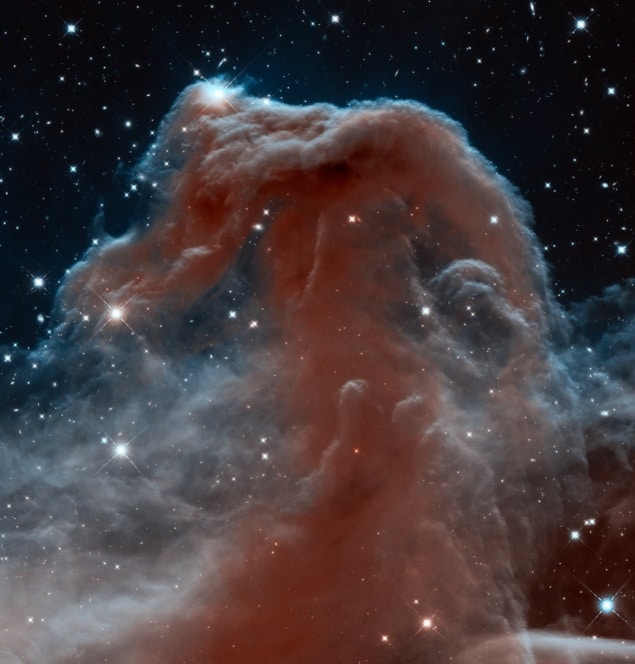The Hubble Space Telescope was launched on 24 April 1990. To celebrate its 30th anniversary in space, Physics World is publishing a series of blog posts exploring Hubble’s 10 best images, as chosen by the science journalist and editor Keith Cooper

Selecting a definitive list of the best images taken by the Hubble Space Telescope is an impossible task. The orbiting observatory has snapped so many superb shots of deep space that everyone has their own favourites based on aesthetic appeal and scientific importance. Nevertheless, in this series I’ll explore 10 images that ought to be contenders.
Number 10 on the list is this image of the Horsehead Nebula. Hubble saw this iconic dark nebula in a very different light in the autumn of 2012. The telescope was always famed for its prowess in visible and ultraviolet light, but with the addition of the Wide Field Camera 3 during its final servicing mission in 2009, Hubble also gained capabilities in the near-infrared. This allowed it to see through some of the nebula’s obscuring dust – which normally appears black against the red glow of the emission nebula behind it – to reveal the delicate, wispy structures that make up the nebula, which acts as a shroud, concealing the birthplace of stars within.



